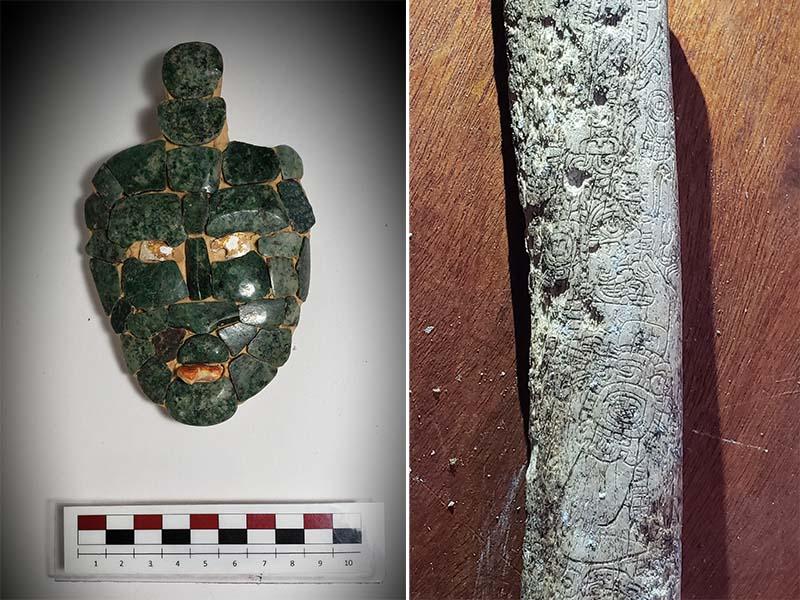Tulane archaeologist uncovers ancient Maya king’s tomb, revealing rare treasures and royal lineage
An ancient Maya tomb dating back 1,700 years has been discovered by a Tulane University archaeologist at the site of Chochkitam in Guatemala near the borders of what are now Mexico and Belize.
The tomb holds extraordinary funeral offerings, including a mosaic jade mask, rare mollusk shells and writings carved in human femur bones. One depicts the profile of a man who is believed to be a previously unknown king holding a jade mask like the one found in the tomb. Hieroglyphs on the artifact are thought to identify the king's father and grandfather, linking the ruler to the Maya states of Tikal and Teotihuacan.
“A discovery like this is a bit like winning the lottery in terms of information,” said Francisco Estrada-Belli, the lead archaeologist who discovered the tomb in 2022 and has since been working to preserve, scan, photograph and interpret the finds. “It opens a window into an obscure time we have very little texts about.”
“A discovery like this is a bit like winning the lottery in terms of information."
Francisco Estrada-Belli, Tulane University School of Liberal Arts
The height of the Maya classic period spans 250-900 AD, and little remains of that time due largely to looting of archaeological sites. Estrada-Belli and his team discovered the tomb only about 2 meters (6 feet) from where looters had stopped digging.
They were fortunate that the only damage to the tomb, besides natural decay, was the stone ceiling of the tomb collapsing in on itself.
“That was the first amazing thing about it,” said Estrada-Belli, a research assistant professor in the Tulane University School of Liberal Arts. “It was very lucky.”
The team first discovered the tunnels dug by looters using lidar technology, which shoots laser beams from an airplane through dense jungle foliage to map what’s on the ground.
“It’s like taking x-rays of the jungle floor,” Estrada-Belli said. “It revolutionizes our field. Only now can we see where we’re going instead of just bushwhacking through the jungle hoping to find something.”
The tomb held more than 16 shells of spondylus, a rare spiny oyster that in ancient times were used by royalty as jewelry and currency as well as in religious and sacrificial offerings.
The relics, estimated to be from 350 CE, provide a connection to Tikal and the central Mexican site of Teotihuacan, which influenced Maya rulers at the time. They also reveal important information about religious devotion and royal succession.
The discovery comes 100 years after Fran Blom, an early director of Tulane’s famed Middle American Research Institute (MARI), first explored the site. The Chochkitam ruins were first investigated in 1924, but no formal excavation — only looting — had taken place until Estrada-Belli’s team began work in 2019. They discovered the tomb during fieldwork in 2022.
"All of Indigenous America has a deep and complex history," said Marcello A. Canuto, MARI director and Tulane archaeologist specializing in the Maya archaeology. "For this reason, Tulane recognized early on that it was important and worthy of serious and focused academic interest. Discoveries like this one and others, including those made by other Tulane faculty and students also conducting fieldwork, represent Tulane's commitment to the study of ancient indigenous American peoples and their accomplishments."
Estrada-Belli said the next stage in his work at the site will be to conduct DNA testing on the bones and maybe uncover additional key contents buried within the abandoned pyramid.
EDITOR'S NOTE: Photos available for media use.

